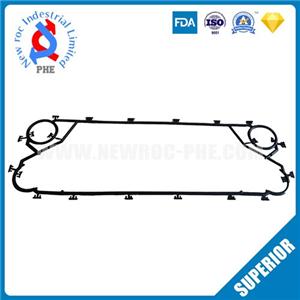Improve the heat transfer coefficient of plate heat exchanger
In fact, as long as the heat transfer coefficient of the surface on both sides of the plate heat exchanger is increased at the same time, and the fouling layer must be reduced, the heat exchanger plate with high thermal conductivity must be selected, and again, the thickness of the heat exchanger plate must be reduced. In this way, the heat transfer coefficient of the plate heat exchanger can be effectively increased.
1. Improve the surface heat transfer coefficient of the heat exchanger plates. Because the corrugation of the plate heat exchanger can cause the fluid to generate turbulence at a small flow rate, it can obtain a higher surface heat transfer coefficient, surface heat transfer coefficient and heat transfer The geometric structure of the corrugation of the plate is related to the flow state of the medium. The waveforms of the heat exchanger plates include herringbone, straight, spherical, etc. The corrugated cross-section shape is triangular (the heat transfer coefficient of the sinusoidal surface is large, the pressure drop is small, the stress distribution is uniform under pressure, but the processing is difficult) The herringbone plate has a higher surface heat transfer coefficient, and the included angle of the corrugation The larger the value, the higher the velocity of the medium in the flow channel between the plates, and the larger the surface heat transfer coefficient.
2. Reducing the thermal resistance of the fouling layer The key to reducing the thermal resistance of the fouling layer of the plate heat exchanger is to avoid fouling of the heat exchanger plates. When the thickness of the heat exchanger plate fouling is 1 mm, the heat transfer coefficient is reduced by about 10%. Therefore, we must pay attention to the water quality on both sides of the plate heat exchanger, so as to avoid the heat exchanger plate fouling, and to prevent the sundries in the water from adhering to the heat exchanger plate.
3. Use heat exchanger plates with high thermal conductivity to choose austenitic stainless steel, titanium alloy, copper alloy, etc. Stainless steel has good thermal conductivity, with a thermal conductivity of about 14. 4 W/(mK), high strength, good stamping performance, not easy to be oxidized, and lower price than titanium alloy and copper alloy. It is used a lot in heating engineering, but it is resistant to chlorine The ability of ion corrosion is poor.




